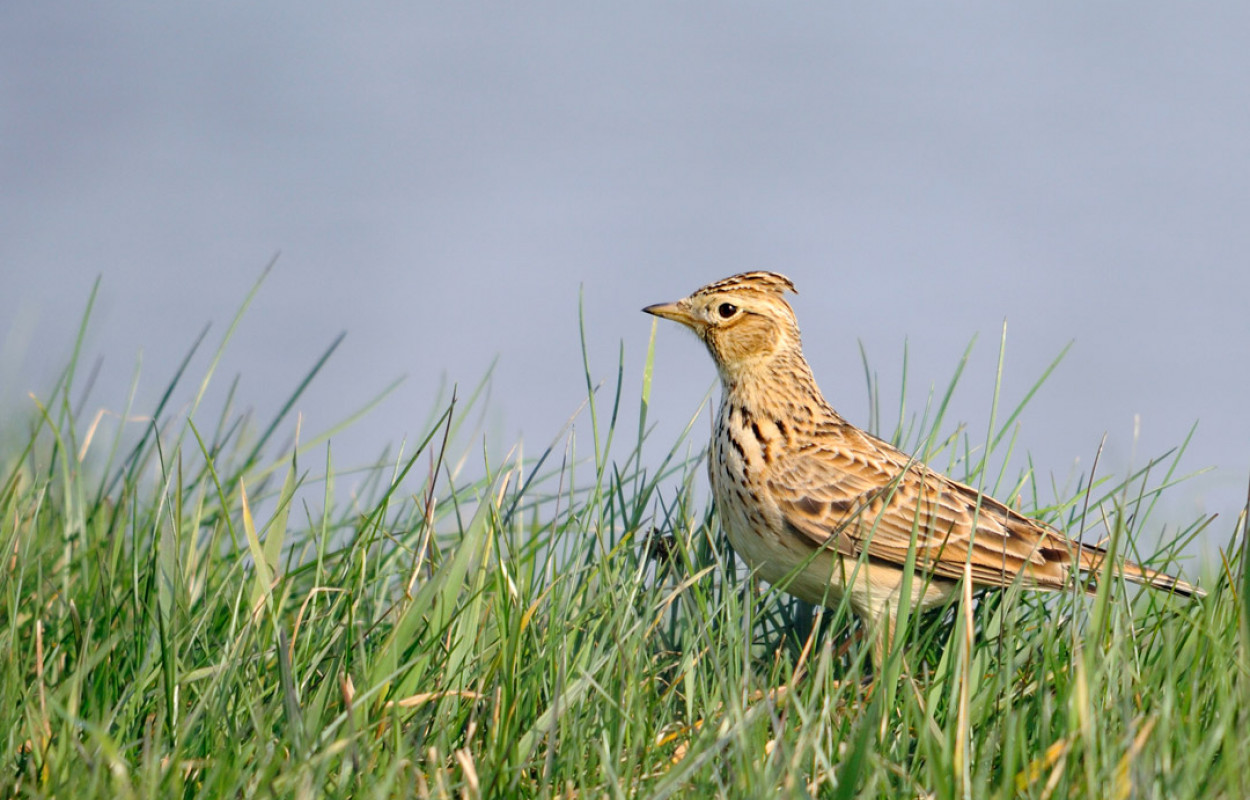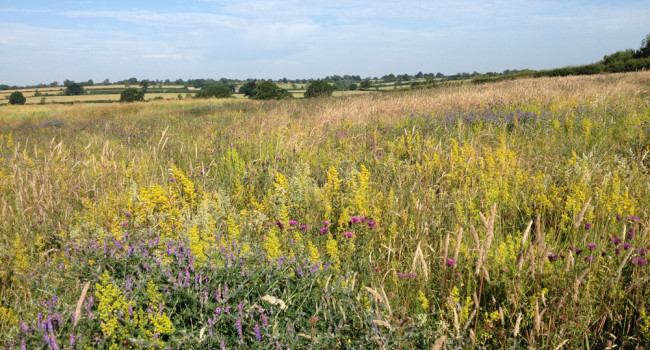Reversing declines in farmland birds: how much agri-environment provision is needed at farm and landscapes scales?

Author(s): Sharps, E., Hawkes, R., Bladon, A., Buckingham, D., Border, J., Morris, A., Grice, P. & Peach, W.
Published: January 2023
Journal: Journal of Applied Ecology
Digital Identifier No. (DOI): 10.1111/1365-2664.14338
Abstract
Agri-environment schemes (AES) are the primary policy mechanism for addressing farmland biodiversity declines across Europe. Despite previous studies on the impacts of AES on biodiversity, there is little empirical evidence on the scale of provision required to reverse declines.
Across three regions of lowland England with contrasting farm systems (arable, pastoral, mixed), we estimated avian population growth rates (PGRs) on farmland with high AES provision (‘higher-tier’: average bird-friendly option cover = 7.4%), low AES provision (‘lower-tier’: 2.3%) and no bird-friendly AES (‘no AES’). Ten-year PGRs were derived for 24 species and three multi-species groups comprising farmland-associated species (‘farmland birds’), species of conservation concern (‘priority birds’) and species restricted to farmland (‘specialist birds’). We used PGRs to simulate the proportion of the regional farmland landscape that would have to be assigned to higher- and lower-tier agreements to stabilise or increase populations.
In the arable and pastoral regions, 13/23 and 13/22 species, respectively, had more positive PGRs under higher-tier AES than on no AES farmland (none had more negative PGRs), compared to 4/22 (positive) and 1/22 (negative) in the mixed region. Only two to four species per region exhibited more positive PGRs under lower-tier AES compared to no AES farmland.
Multi-species PGRs in the arable and pastoral regions increased from no AES (strong decline), to lower-tier (decline or stability) to higher-tier (moderate or strong increase). There was no overall AES effect in the mixed region.
To increase regional farmland bird populations by 10% over 10 years, 47% and 26% of the farmed landscape would need to be devoted to higher-tier agreements in arable and pastoral landscapes respectively. This falls to 34% and 17% when higher-tier is targeted at localities supporting higher abundances of target species, and to 29% and 10% when 30% of the farmed landscape is also devoted to lower-tier. Priority and specialist birds require higher provision levels.
Policy implications. Where farmland bird recovery is an AES objective, farms should prioritise higher-tier agreement delivery over lower-tier. Farmland bird responses to AES provision are likely to vary regionally, but careful targeting will reduce the amount needed in the landscape.
This study compares the changing fortunes of farmland bird populations on land managed under different tiers of AES provision. Survey work on land managed under the higher-level tier (intended to deliver greater biodiversity benefits) enabled changes in the abundance of target farmland bird populations to be compared with those on land that was either within the lower-level tier of AES provision or outside AES provision altogether. Data from the lower-level tier land with no AES provision were collected through the BTO/JNCC/RSPB Breeding Bird Survey. While this means that the data being compared were collected in different ways, there is very good evidence to show that this approach is appropriate.
Land that was managed under the higher-level tier had, on average, more ‘bird-friendly option’ cover (7.4%), compared to land managed under the lower-level tier (2.3%). The growth rates of farmland bird populations (covering 24 species and three groups – farmland-associated species, species of conservation concern, farmland specialists) were calculated over a 10-year period. The study also looked at these patterns across three farmland types: arable, pastoral, and mixed farming.
For each farmland type, comparisons were made between the AES tiers and non-AES land, revealing that 57% of species in arable landscapes had a more positive population growth rate under higher-level tier AES than on non-AES farmland; the corresponding figures for the pastoral and mixed farming landscapes were 59% and 18% respectively. Only two to four species per region exhibited more positive trends under lower-level tier AES compared to non- AES farmland. This suggests that the higher-level tier is delivering the intended biodiversity benefits.
The next question was to work out how much of the land would need to be placed within the higher-level tier in order to achieve desired conservation outcomes for target bird species. This revealed that to increase regional farmland bird populations by 10% over 10-years, some 47% of the arable farmed landscape and 26% of the pastoral farmed landscape would need to be devoted to higher-level tier agreements. These figures could be reduced if the land to be placed within AES is targeted at localities supporting higher abundances of target species, and if additional land area is brought into the lower-level tier scheme at the same time. This knowledge helps to inform decisions about the quantity and placement of future AES schemes at a landscape scale.







Share this page